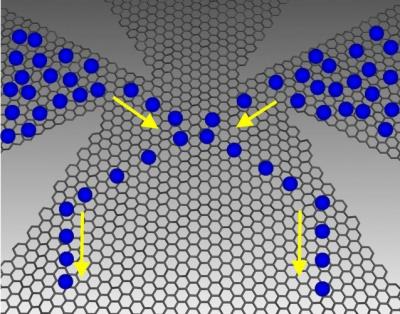Scientists at The University of Manchester, along with a team at Shandong University, have designed a graphene-based electrical nano-device that could substantially increase the energy efficiency of fossil fuel-powered cars.

The nano-device, known as a 'ballistic rectifier', can convert heat which would otherwise be wasted from the car exhaust and engine body into a usable electrical current. The recovered energy can then be used to power additional automotive features such as air conditioning and power steering, or be stored in the car battery.
The nano-rectifier utilizes graphene’s phenomenally high electron mobility, a property which determines how fast an electron can travel in a material and how fast electronic devices can operate. The device itself is reportedly the most sensitive room-temperature rectifier ever made, and conventional devices with similar conversion efficiencies require cryogenically low temperatures.
The scientists involved in creating the concept said: "The working principle of the ballistic rectifier means that it does not require any band gap. Meanwhile, it has a single-layered planar device structure which is perfect to take the advantage of the high electron-mobility to achieve an extremely high operating speed. Unlike conventional rectifiers or diodes, the ballistic rectifier does not have any threshold voltage either, making it perfect for energy harvest as well as microwave and infrared detection.
The team is now looking to scale up the research by using large wafer-sized graphene and perform high-frequency experiments. The resulting technology may also be applied to harvesting wasted heat energy in power plants.

